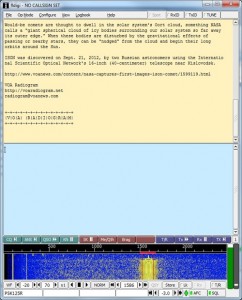One of my favorite correspondents has brought the Voice of America’s Radiogram project to my attention. The venture experiments with transmitting digital text and images via shortwave broadcasting. Dr. Kim Andrew Elliott is running the show with some technical assistance from my aforementioned contact: Bennett Kobb.
“These experiments are intended to establish the best mode for transmission of text via international AM broadcast,” Kobb told me. The resultant data modes “are more robust against intentional and unintentional interference than is speech. Ultimately, simple software will be distributed that will enable nontechnical persons to decode the news broadcasts even where they are jammed or too weak to hear otherwise.”
As Dr. Elliott puts in one of his experimental broadcasts:
We are doing this because shortwave transmitters might be a useful link when the Internet is disrupted by disasters [or] dictators. . . . Sometimes it’s useful to have news and information in text format, and occasionally in poor shortwave reception conditions, when the announcer’s voice is difficult to understand, text might get through with much greater reliability.”
Receivers of these text transmissions can decode them themselves via a shortwave radio, a basic personal computer, a patchcord to connect the earphone jack of the radio to the microphone input of the PC, and some decoding software
Here are some fun YouTube videos of the reception process in various experiments.



